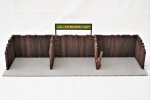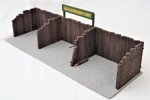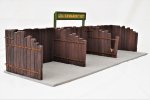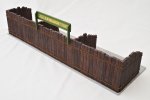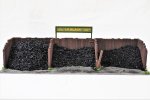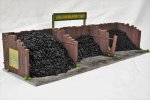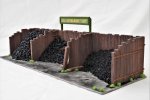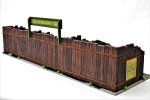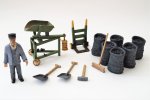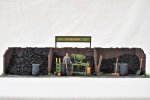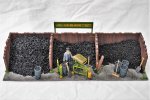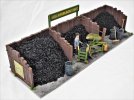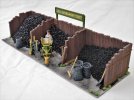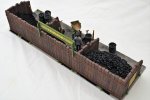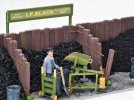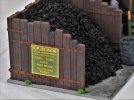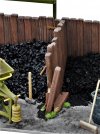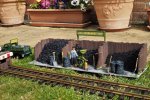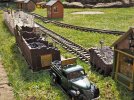David1226
Registered
Up until now, all of my G Scale modelling has been items of rolling stock, initially goods vehicles and then passenger stock. I always purchased, modified and created stock to a strict plan, although admittedly that plan has broadened over the years and I still have some items, in the pipeline, for which I have the component parts but as yet not had the time to complete. The enforced shutdown of everything due to Corona virus meant that I should have had the time but then having gone blind in my right eye, due to delayed surgery for cataract removal, my modelling efforts have been frustrated. To break the cycle I decided to make a start on scenic items for the Claptowte Railway and made a start with some coal staithes.
My preferred medium has always been plasticard sheet. Having pondered over the size and design of the staithes, I used a 3mm thick sheet of birch plywood for the base. I decided that the ‘wooden’ walls would be scribed and grained plasticard that would have to be 6mm thick. The thickest material that I had to hand, of a suitable size, was 2mm thick, so the first step was to glue together three layers to give the required 6mm thickness. I then set about marking out, scribing and graining the walls. The tops of the planks were carved in a typical uneven, random manner. Strapping was applied using plastric strip material and bolt heads were added using 1mm self adhesive decorative pearls, purchased on Ebay. I thought it would be a bit of fun, and add some interest if one of the walls had some damage with a couple of bent/broken planks, perhaps where a lorry driver had been less than careful.
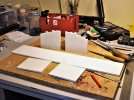
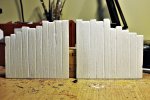
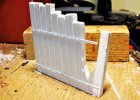
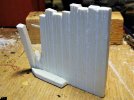
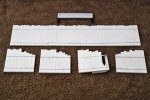
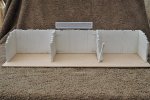
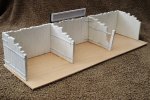
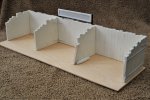
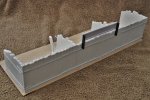
David
My preferred medium has always been plasticard sheet. Having pondered over the size and design of the staithes, I used a 3mm thick sheet of birch plywood for the base. I decided that the ‘wooden’ walls would be scribed and grained plasticard that would have to be 6mm thick. The thickest material that I had to hand, of a suitable size, was 2mm thick, so the first step was to glue together three layers to give the required 6mm thickness. I then set about marking out, scribing and graining the walls. The tops of the planks were carved in a typical uneven, random manner. Strapping was applied using plastric strip material and bolt heads were added using 1mm self adhesive decorative pearls, purchased on Ebay. I thought it would be a bit of fun, and add some interest if one of the walls had some damage with a couple of bent/broken planks, perhaps where a lorry driver had been less than careful.









David

